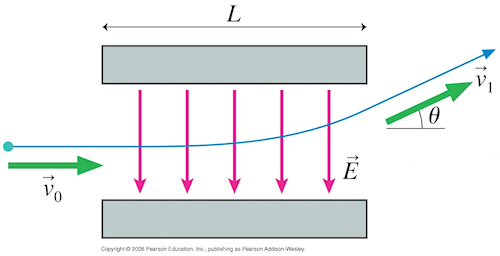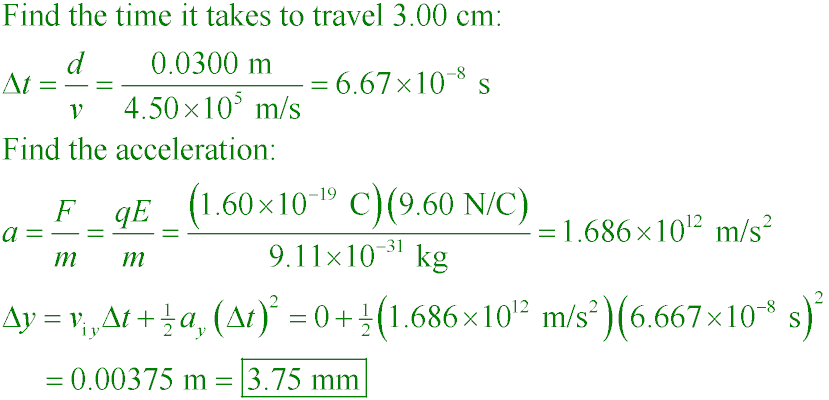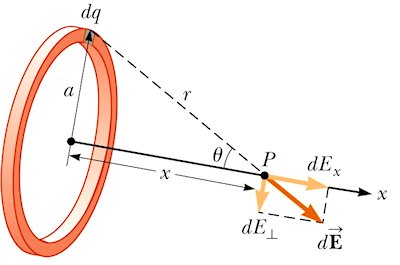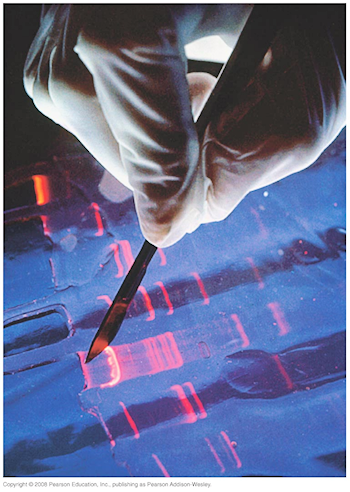POP5 19.15
A uniformly charged ring of radius 10.0 cm has a total charge of 75.0 µC.
Find the electric field on the axis of the ring at 100 cm from the center of the ring.
A. 2.41×107 N/C
B. 8.99×106 N/C
C. 1.51×105 N/C
D. 6.64×105 N/C
Answer
klm
What is the sign of the charge on the upper plate in this figure?

A. positive
B. negative
C. could be either
Answer
klm
What is the sign of the charge on the moving particle in this figure?

A. positive
B. negative
C. could be either
Answer
POP4 19.29
An electron moves at 4.50×105 m/s in the horizontal direction. It enters a uniform
vertical electric field with a magnitude of 9.60 N/C. Ignoring gravity, what is its vertical deflection
during the time interval in which it travels 3.00 cm horizontally?

A. 4.17 nm
B. 8.89µm
C. 3.75 mm
D. 19.6 cm
Answer
PSE6 q23.18
An electron and a proton are placed in the same electric field. Compare the forces and accelerations:
A. Fe = Fp ... ae = ap
B. Fe = Fp ... ae > ap
C. Fe < Fp ... ae = ap
D. Fe = Fp ... ae < ap
Answer
D. 6.64×105 N/C

A. positive
The electric field points away from positive charges and toward
negative charges.
B. negative
A negatively charged particle will experience a force opposite the
direction of the electric field; it gets pulled opposite the field.
C. 3.75 mm

B. Fe = Fp ... ae > ap
The magnitude of the forces are the same because the charges are the same, although the
electron will be pushed opposite E and the proton will be pushed in the direction of E.
The electron mass is smaller so that the same force produces a much larger acceleration.






